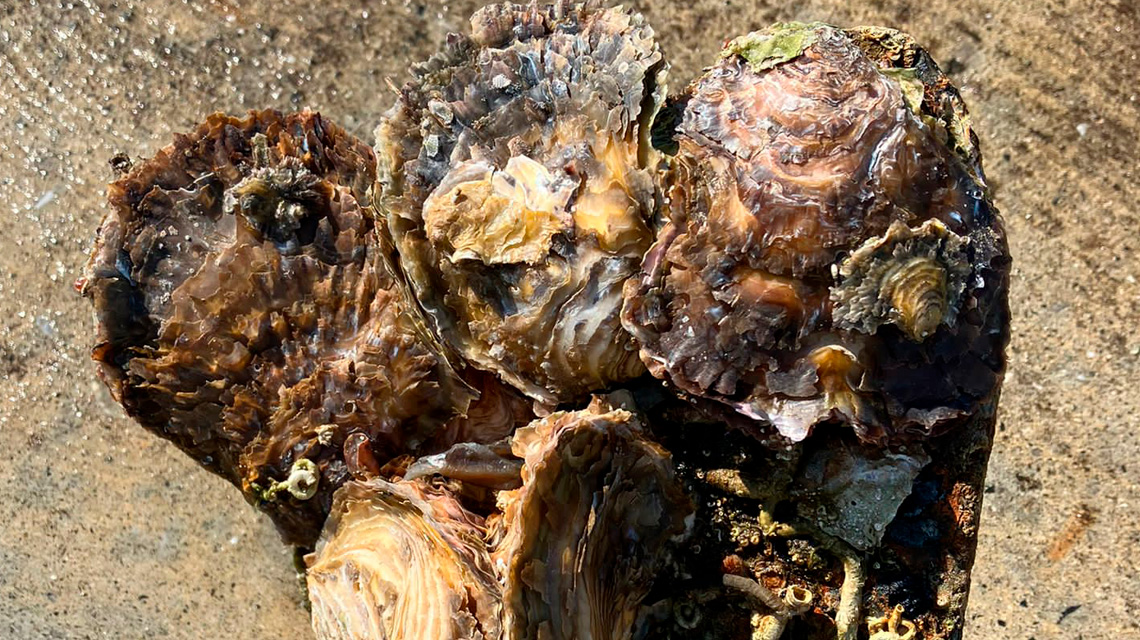Italian National Agency for New Technologies, Energy and Sustainable Economic Development

Environment: Italy, from shellfish farming waste new reefs for sea regeneration
ENEA is developing "reef" prototypes from shellfish farming waste, like mussel shells and natural fibres, to foster flat oyster population in the Gulf of La Spezia. It’s a native mollusk whose great filtration power provides significant ecosystem benefits to marine environments and other ecosystems (climate regulation, biodiversity, food supply), entailing cultural and socio-economic advantages. The activity, conducted by ENEA in collaboration with the Associated Mussel Farmers as part of the PNRR project RAISE [1], is based on the principles of the Native Oyster Network, the project's consultative body, active in Ireland and the United Kingdom.
This specific activity is part of those carried out by ENEA in the context of "Smart Bay S. Teresa[2]" which pursues knowledge, conservation and use of calcifying ecosystems, valorisation of aquaculture waste and implementation of interventions to regenerate the environment and port areas, to counter the effects of climate change.
Ostrea edulis is a species of oyster native to Europe, which inhabits the surface to a depth of a few meters. Ii aggregates along the coast in groups of individuals forming three-dimensional structures, the so-called reefs or beds, actual natural beds, capable of providing habitat, shelter and sustenance for many other species, some also of commercial value. For this reason oyster reefs, providing 3D habitat for hundred of species, foster biodiversity and, thanks to their filtration power, help keep seawater clean. Moreover, this species of oyster are an important source of food and its cultivation, like that of other bivalve mollusks, is one of the most sustainable marine activities.
The presence and importance of the flat oyster in the Gulf of La Spezia was already reported at the end of the 19th century, when studies for its repopulation for commercial purposes began[3], but over time the anthropic impacts such as development of coastal activities, expansion of the military and commercial port and climate change have profoundly altered the area, with serious consequences on some marine species like Ostrea edulis,which has been progressively declining.
The value of the blue economy, which includes activities based on sea resources like fishing, aquaculture, marine minerals, renewable energy, coastal tourism and other maritime activities like biotechnology, shipbuilding and port activities, is estimated at around 200 billion euro, with 228 thousand companies employing almost 914 thousand people, generating an added value of 142.7 billions and a growing trend[4].
In addition to ENEA and the Associated Mussel Farmers Cooperative, the Port Authority of the Eastern Ligurian Sea, the AMA (Mediterranean Aquaculturists Association), the IMC Foundation (Centro Marino Internazionale ONLUS), the University of Milan Bicocca and the Underwater Operations Group (GOS) of the Underwater and Incursori Group Command (COMSUBIN) of the Navy participate in the activity. In particular, the support of divers in scientific and technical sea activities and in diving relating to the environmental restoration projects, also funded by the PNRR, are part of a Collaboration Agreement between the Navy and ENEA signed in 2022.
“In regenerative processes, marine ecosystems are crucial, for the role they play both as providers of services - such as carbon sequestration, availability of food resources, promotion of biodiversity, improvement of the landscape - and in adaptation and mitigation of climate change impacts”, explained Chiara Lombardi at the ENEA Biodiversity and Ecosystem Services laboratory. “Furthermore, according to the principles of regenerative economy, nature-based solutions[5], key for sustainable economic growth also in the marine environment and for supporting the blue economy, make economic systems vital and healthy, in line with the objectives of the PNRR".
As part of the activities and in collaboration with the Municipality of Lerici, LifeGate and Scuola di Mare, a hi-tech area/laboratory for environmental restoration will be created, equipped with high resolution systems to monitor the ecosystems in the Gulf. The initiative is also funded as part of two other PNRR projects dedicated to strengthening the observation infrastructures in the Gulf of La Spezia, which involve ENEA and the other research institutions partnering with Smart Bay S. Teresa.
Thanks to a call co-financed by ENEA and the University of Milan Bicocca (Marine Sciences, Technologies and Management) with PNRR-RAISE funds, a PhD project aimed at studying the local population and transplantation activities of Ostrea edulis will also be launched.
Smart Bay S. Teresa also participates in the Water Defender Alliance, a coalition for sea protection coordinated by LifeGate, which brings together companies, research and institutions, port authorities and citizens.
Photogallery
For more information please contact:
Chiara Lombardi, ENEA - Biodiversity and Ecosystem Services Laboratory - Centro Ricerche Ambiente marino S. Teresa
Notes
[1] Robotics and AI for Socio-economic Empowerment, Ecosistema dell’Innovazione Regione Liguria Innovation Ecosystem Liguria Region (Spoke 4, progetto 8, Task 8.2 - Sustainable and Circular Solutions for Greening ports, attività 8.2.5 Renaturing the La Spezia port through circular and regenerative nature-based solutions
[2] Smart Bay S. Teresa is conducted by ENEA, Cnr, INGV, Comune di Lerici, Scuola di Mare S. Teresa and Associated Mussel Farmers
[4] XI Rapporto sull’Economia del Mare - Osservatorio Nazionale sull’Economia del Mare OsserMare di Informare - Centro Studi Tagliacarne -Unioncamere
[5] NBS- Soluzioni ispirate e supportate dalla Natura, economicamente vantaggiose, che forniscono benefici ambientali, sociali ed economici, ed aiutano a costruire resilienza”, E; Faith et al. 2019
